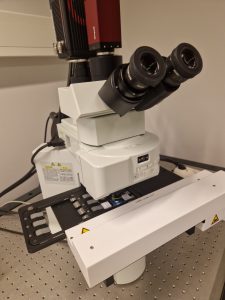Hi! My name is Tonje and this semester I have taken the course BIO299. I’m on my first semester on a master’s degree in biology and took this course to get a taste of how it is to write a bigger thesis and get ideas for themes I could write about for my master thesis. I ended up working on a project about pollen classification, or rather trying out a relatively new method for pollen classification using image recognition. I have previously in my degree spent many hours looking through a microscope and classify and/or count different species. I was therefore excited to try and explore this more automated approach.
The principle of this method is to train up a model using images of pollen grains, and then using this model to classify unidentified pollen grains. The training of the model was done with a neural network, which essentially lets a model learn the characteristics of pollen species in a similar way as a human brain does. For this, we needed to collect images of some different species of pollen to train up and test the performance of the model, and we needed some unidentified pollen to test the model on. We collaborated with another project called APPLECORe, and from them we used 5 bees and collected their pollen to use as our unidentified pollen. We then borrowed some samples from the University of Bergen’s reference collection and used those to train the model. Under you can see a selection of some of the things I did, as well as what the images we used to train the model looked like.

Figure 4: A: a full slide with pollen from a bee. B: Anemone nemorosa C: Geranium sylvaticum D: Fragaria vesca E: Silene dioica F: Trientalis europaea G: Vaccinium vitis-idaea.
I will not go into too much detail on all the different processes and methods I did, as it would take up so much space to write them all in detail. I will say however that I did a variety of different tasks like preparing microscope slides with pollen samples on them, taking pictures with a fancy machine called a slide scanner which lets you take pictures of whole microscope slides (figure 4: A), cropping out smaller images from the whole slide (figure 4: B, C, D, E, F, G) and some programming for creating the model. All the tasks were very new for me, however there were a great team of people who helped me along the way whenever I got stuck. Especially with the programming as it was more advanced than anything I have done before.
I liked how I was given a lot of responsibility for this project. I were shown methods and guided by the others whenever I needed, and then I were able to do a lot of the tasks on my own. I think this project has so much potential, and not just for pollen analysis. This type of model could essentially be used for any research where recognizing certain visual characteristics is needed. Overall, I am very glad I took this course as it challenged me to do new things and I got to be a part of a real research!
Thanks for reading about my project, I hope you enjoyed it and found it interesting!


